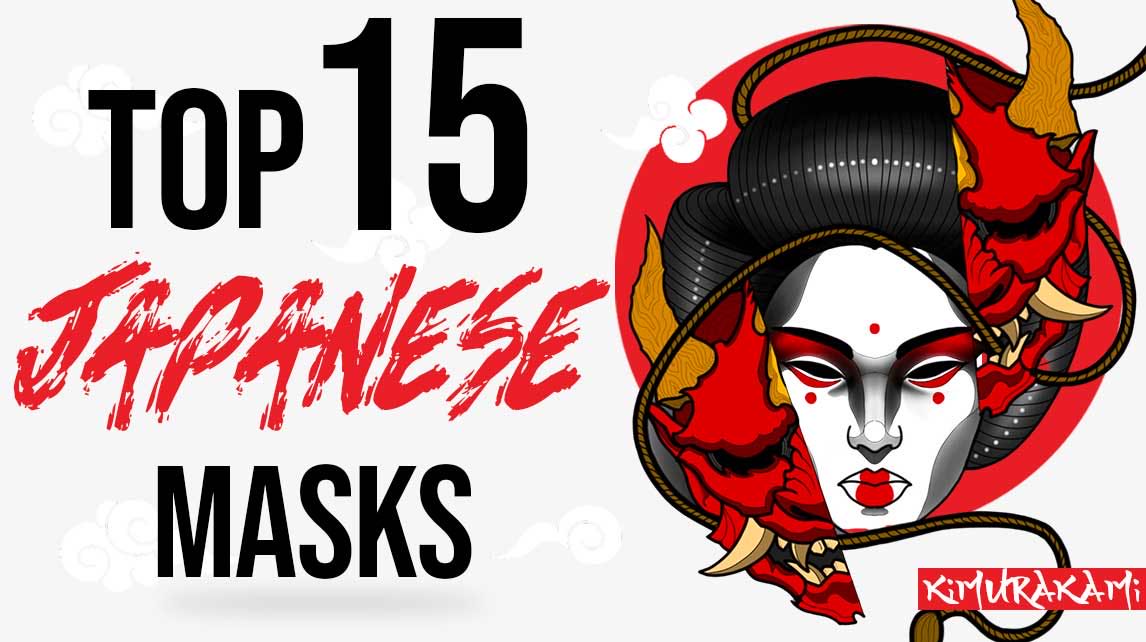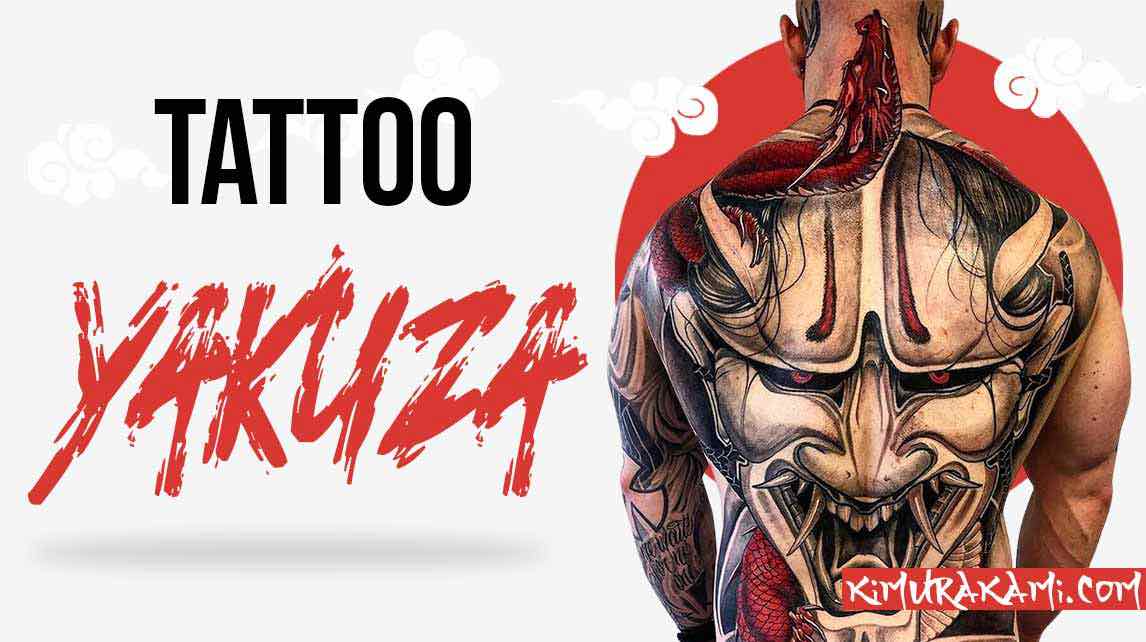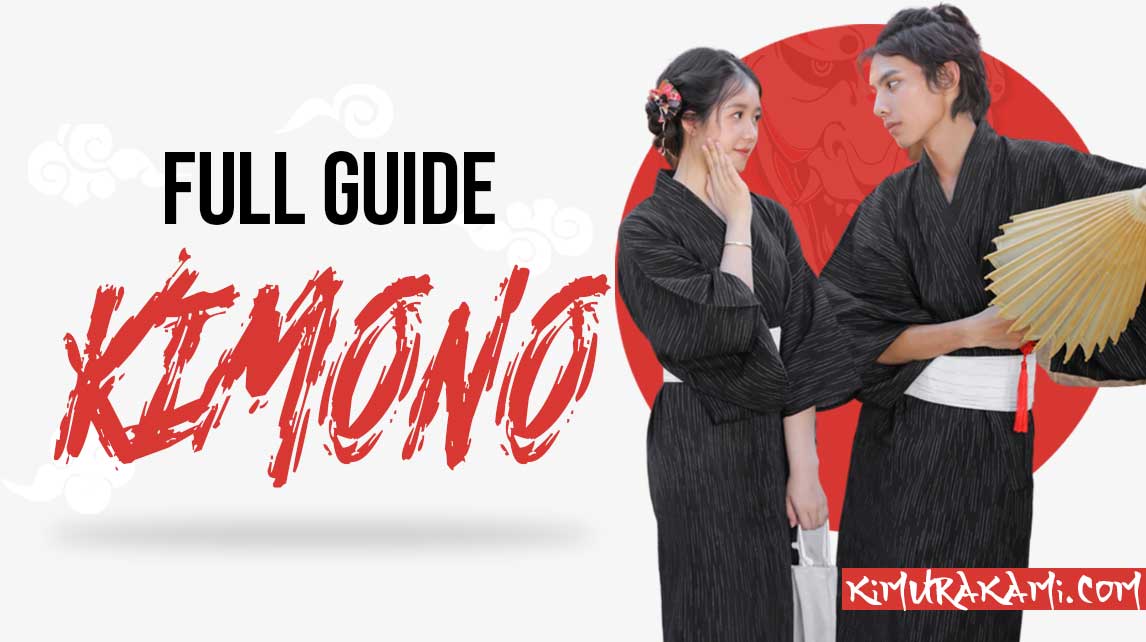Between reality and fiction, the term "ninja" is drowning and you can't make a distinction anymore? Do you want to know what is a ninja ?
The Japanese ninja is a shadow warrior who worked for the shogun in the feudal era as a mercenary. He is an expert in ninjutsu. This is the martial art practiced by this caste of Japanese warriors whose first historical facts date back to 1150 AD.
You will discover in this blog post:
- Everything you need to know about the real Japanese ninja of the feudal era
- What are the ninja Skills ?
- The imagined and mediated version of the ninja according to modern fiction
The ninja is a modern appellation of this warrior caste belonging to the ancestral folklore of the land of the rising sun. Surrounded by mystery and hidden with kitsune mask, they fuel the stories and legends of the Japanese archipelago with the utmost secrecy. It's time to find out the truth about the real ninja !
Everything you need to know about the ninja of feudal Japan

Image source Ilya Gagarin | Retouching team Shogun Japan
The Japanese culture describes the ninja as a warrior who uses unorthodox means to achieve his ends. Although the Western-derived term "ninja" is the most commonly used to describe them, it is not the original. In fact, the original name to describe these warriors was "Shinobi " or "Kunoichi" for women.
Etymology of these shadow warriors and their origin
Etymology of the terms for these feudal warriors
Historically, the term "ninja" was still a name not widely used by Westerners. It was from the 20th century onwards that it became more common in popular culture thanks to the success of fictional works. This name is made up of two Japanese characters namely, "Nin" for stealth and "Ja" for specialist.
The term "Shinobi" is the traditional name that was used in poems of the medieval era. Like its modern counterpart, it refers to the art of stealth in addition to "Mono" meaning person. Indeed, Shinobi is the shortened version of "Shinobi-no-mono" and this remains a term still used in historical documents.
If the word Shinobi referred to the male class, its female gender was kunoichi (Ku,No,ichi, the strokes forming "woman" in kanji). Although she is not referenced in the books, modern fiction refers to her as a female ninja. In reality the writings speak of kunoichi no jutsu, a term referring to the use of women for espionage purposes.
Shinobi Origin of the feudal era and their roles
 Source illustration Jeff Chen | Image edited by Shogun Japan
Source illustration Jeff Chen | Image edited by Shogun Japan
The earliest records of ninja date back to 1150, at the end of the Heian period. At that time, governors asked the myōshu to send their sons to train in order to form a group of warriors. Historical sources relate that the ninjas are said to be direct descendants of the last heir of the Qin dynasty.
After the decline of the Qin, the ethnic Chinese population went to the mountainous regions south of Kyoto. There they found warrior-monks living as hermits (the Yamabushi). The latter transmitted all their fighting knowledge. The provinces of Iga and Koga became shinobi clans from which came most of the ninjas who marked the feudal era.
Ninjas were considered "outcasts" by Japanese society because of their criminal practices (assassinations, espionage, etc.). They were a warrior caste free of all movement and ethics unlike the samurai associated with the daimyos. Yet, these same bushido (code of honor) respectful samurai and daimyos employed ninjas as mercenaries during the Kamakura era.
The array of accessories and skills to be a true ninja
 Photo of a mysterious ninja of japan
Photo of a mysterious ninja of japan
The ninja costume: the black tunic of the stealth warrior
The Japanese ninja is considered to be a person who can blend into the darkness in order to carry out his crimes. His "all black" and light tunic is no longer a secret since the 19th century. Thus, the ninja is dressed in a breastplate and black pants that allow him to sneak into the shadows.
Aside from the lightness of this getup, the ninja wore Japanese socks (considered footwear) to avoid any suspicious noise. They also wore a black hood that concealed their identities, yet left an opening for their eyes. In modern Japanese folklore, ninjas wear a mask much like the ninja anbus in the Naruto manga. The village of Konoha wears a white kitsune mask. This is a Japanese mask featuring the fox demon...
While no medieval text is clear on the subject, the black tunic of the ninja remains the most plausible. However, the shinobi sometimes disguised themselves as priests, peasants, etc., to do espionage and stir up trouble. The monks of Zen Buddhism possessed a special outfit to go unnoticed and played the flute to meditate.
The traditional weapons of the ninja: throwing weapons and weapons in close combat
 Photo of a traditional Japanese ninja carrying a katana
Photo of a traditional Japanese ninja carrying a katana
During the Sengoku era, ninjas used specific weapons more or less similar to those of peasants. These weapons are also represented in Japanese culture such as anime films and manga. Here is a non-exhaustive list of traditional weapons commonly used by the shinobi of the time:
- Katana: this is a Japanese sword and the quintessential weapon of the ninja. It was placed diagonally across his back so as not to impede his movements. It was used as a fulcrum to climb the walls.
- Ninjatô: it is a kind of dagger-katana of modern folklore. As an example, Leonardo of the ninja turtles has it.
- Kunai: this is a peasant work knife that quickly became a throwing weapon. The konoha ninjas in the anime manga Uzumaki Naruto carries it.
- Shuriken: this is a metal star used as throwing weapons. Ninja schools are specialized in the projection of this weapon. Itachi and Sasuke Uchiwa of the Naruto mangas, are experts in it.
- Kusarigama: it is a sickle connected to a chain.
Let's now look at the secret skills of these shadow warriors
The skills of the ninja: Ninjutsu, the essence of the true shinobi
 Splendid representation of ninja art | Illustration by Antoine Collignon | Retouching team Shogun
Splendid representation of ninja art | Illustration by Antoine Collignon | Retouching team Shogun
The ninja had a very specific mission, that of intelligence. Therefore, coming back alive was a priority, which implies the abstraction of any combat. Therefore, he used dodging and defensive techniques to escape the fight.
The Ninjutsu is a Japanese martial art whose teaching is kept secret which is the legend of these warriors without honor. This technique is also called "Shinobi no jutsu". This is the skill set of the ninja. This includes combat techniques focusing on weapon handling, camouflage techniques, Taijutsu, etc.
When it was no longer possible to use his weapons, the ninja was forced to fight with his bare hands. This is when he resorted to taijutsu, a martial skill for close combat. It is a body technique allowing the projection of his opponents, pressure of vital points, strangulation, etc.
The mysterious teaching of the shinobi
 Art design by Ed Laag | Illustration retouched by Kimura Clan
Art design by Ed Laag | Illustration retouched by Kimura Clan
The ninja schools, famous in medieval Japanese culture
The various ninja schools of the feudal era gathered a good number of people. Originating in Iga (now Mie Prefecture), the Iga-ryu school trained ninja apprentices in the art of espionage and assassination. During the troubled period when clans were at war, Iga needed stealthy members to maintain its independence.
Originating from Koga (currently Shiga Prefecture), the Koga-ryu school trained experts in taijutsu and weapons handling. They were neighbors and rivals of Iga province, and gave the same type of instruction.
The Togakure-ryu school teaches the fighting and espionage art of ninjutsu as well as its philosophy. It was founded in the 11th century by Daisuke Nishini, a samurai who lost the Gempei War. He fled, refused to practice the suicide ritual of seppuku. After renouncing his honor, he became an apprentice of the ninjas of Iga.
The training of the feudal ninja in the modern era
 Donatello Ninja Turtle by illustrator Max Kostin | Original modified image
Donatello Ninja Turtle by illustrator Max Kostin | Original modified image
We have no written evidence that addresses the teachings of ninjutsu because feudal schools preferred oral learning. They were afraid that by writing their knowledge on scrolls, it would fall into the wrong hands.
You can, however, visit the Togakure ninpo museum, which is no longer the Togakure-ryu of the feudal era, but a museum. There you will discover the evidence of its secret past but also its specialty in ninjutsu: Aikido and shuriken throwing. It's a place to learn about the history of the ninja legend while having fun.
You can also visit Akame Ravine in Mie Prefecture, to be in the heart of Iga ninja territory. This is the medieval training place of these shinobi, when Akame was still part of Iga province. It's a real natural trail and maybe you'll have the chance to walk on water thanks to the powers of the ninjas, who knows?
Do ninjas still exist today?
Ninja myth and reality? What remains of their descendants?
Jinichi Kawakami, the engineer considered the last ninja in Japan
Jinichi Kawakami is the last ninpo apprentice and the father of the Banke shinobinoden academy. He claims to be the 21st head of the Ban clan, a title he inherited after completing his ninjutsu training. Indeed, since the age of 6, he began studying this dark art with the Buddhist sensei (master) Masazo Ishida.
For Kawakami, ninjutsu is the art of survival. He routinely performed breathing and physical endurance exercises. Ninjutsu is an art that brings together physical exercises, meteorology, and chemistry.
His closest disciple was Yasushi Kiyomoto, the master of a dojo in Kanagawa Prefecture. Kawakami states in an interview that there will be no successor and that ninjutsu, belongs to the Edo period. He teaches ninja history at Mie University.
Hatsumi Masaaki, the most famous ninja grandmaster in the
 Hatsumi's writings inspired the world | Illustration by David Masson
Hatsumi's writings inspired the world | Illustration by David Masson
Hatsumi Masaaki is the 34th grandmaster of Togakushi ninjutsu and the author of several books on martial arts. He was Takamatsu Toshitsugu's disciple for 15 years and inherits the 9 martial arts traditions. He renamed this legacy "Bujinkan budo" and founded a dojo in Noda, Chiba Prefecture.
Master Hatsumi welcomes individuals from all over the world to train on the dojo's tatami mats. In the eyes of his disciples, he performs such vivid movements that sometimes make them laugh because it seems so incredible. He explains that he is not teaching anything, but rather showing the movement.
Katas (coded succession of martial movements) are the foundation. You can learn the kata perfectly, but understand nothing about ninpo. Ninjutsu is not part of combat sports, it is a survival skill.
The famous ninjas of medieval Japan
 Real ninja disguised as a ronin samurai | 3d image by Sergi Coca | Retouched image
Real ninja disguised as a ronin samurai | 3d image by Sergi Coca | Retouched image
In feudal Japan, two warrior castes emerged: the samurai related to the daimyos and the ninja. Because this shadow warrior was a secret agent, it is difficult to have records about them. And yet, some ninjas of the dark world have distinguished themselves:
- Fujibayashi Nagato : he was the leader of the ninjas of Iga in the 16th century
- Momochi Sandayu: he is famous for teaching that ninjutsu should be used to save the life of a ninja or else, to protect his lord
- Ishikawa Goemon: he is the Japanese robin hood and the disciple of Momochi
- Hattori Hanzo: he is a samurai of the Iga clan who lived as a ninja with the Mikawa family. His most famous act was to help Tokugawa Ieyasu install the Tokugawa shogunate in 1502
- Mochizuki Chiyome: she had ninja roots considering she belonged to the Koga clan
- Fuma Kotaro: legend has it that he is the murderer of Hattori Hanzo
Japanese ninjas and Japanese popular culture
 Shinobi Ninja in Harajuku streetwear style and wearing a kitsune mask | Ninja drawing by M_Luka Art
Shinobi Ninja in Harajuku streetwear style and wearing a kitsune mask | Ninja drawing by M_Luka Art
The Japanese ninja myth has strongly influenced modern culture so much so that we denote a fanciful exaggeration of ninjutsu. This can be seen in martial arts movies, books or even manga (Naruto for example).
The powers of ninjas in Japanese folklore
Popular folklore grants ninjas magical attributes, quite similar to Buddhist monks. For example, in the manga Naruto (the main reference), one can note faculties of immobilization or even the invocation of animals. All this because the ninjas lived in the mountains with these monks who were considered wizards.
We continue our analysis, with the manga Naruto, which equates ninjas with practitioners of Shugendo. They add the ability to formulate mudras (incantation signs) that the monks probably used to fool the apprentices. The most famous story is that of Jiraya at the time who supposedly summoned a toad to fight a snake.
So it is easy to see how different the ninjas of history are from the ninjas of fiction. These stealthy experts were for the most part, spies. The art of ninjutsu having almost disappeared, has been metamorphosed by popular culture to give its men, fantastic and grandiose powers.
The influence of ninja on Japanese culture
 Sasuke Cosplay: creation by Camilo Veliovich
Sasuke Cosplay: creation by Camilo Veliovich
Although the ninjutsu may seem overrated (due to lack of information), it can be seen that they nevertheless have a considerable impact. in popular folklore. In particular, they can be found in:
- Ninja cosplay costumes
- Video games: "Ninja Blade" on the Xbox console
- "Ninja" movies directed by Isaac Florentine which tends to modernize the myth
- The Ninja Turtles comic book
- The manga "Basilisk" which tells the war between the Koga clan and the Iga clan, etc.
The myth of the ninja shinobi crosses the ages
Feudal Japan experienced the existence of two warrior castes: the free ninjas and the subservient samurai. Historical sources tell that the ninjas would be warriors without honor who lived through the decline of the Qin. They would therefore be of Chinese origin, and took refuge in the mountains of Iga and Koga where they rubbed shoulders with the Yamabushi.
The ninja is the modern appellation used by Westerners to name these shadow warriors. It manages to creep into Japanese culture and suppress the traditional name Shinobi-no-mono. The female version called Kunoichi is actually a technique that involves using seduction of women.
Ninjutsu is a secret art that has been attributed magical abilities by popular folklore. Ninjas were primarily spies dressed in black and using peasant weapons. To this day, there are still two ninjas alive: Hatsumi Masaaki and Jinichi Kawakami.
Thank you for taking this journey with us. And if you want to take your Japanese experience a little further, then read this article : what is a samurai? You will discover everything about the noble Japanese warrior... See you soon!










Leave a comment